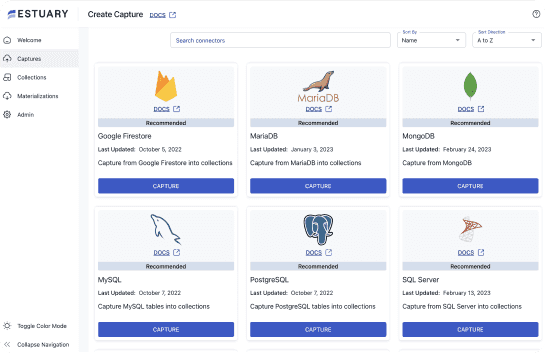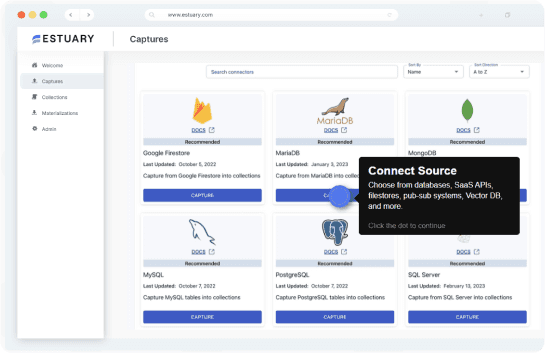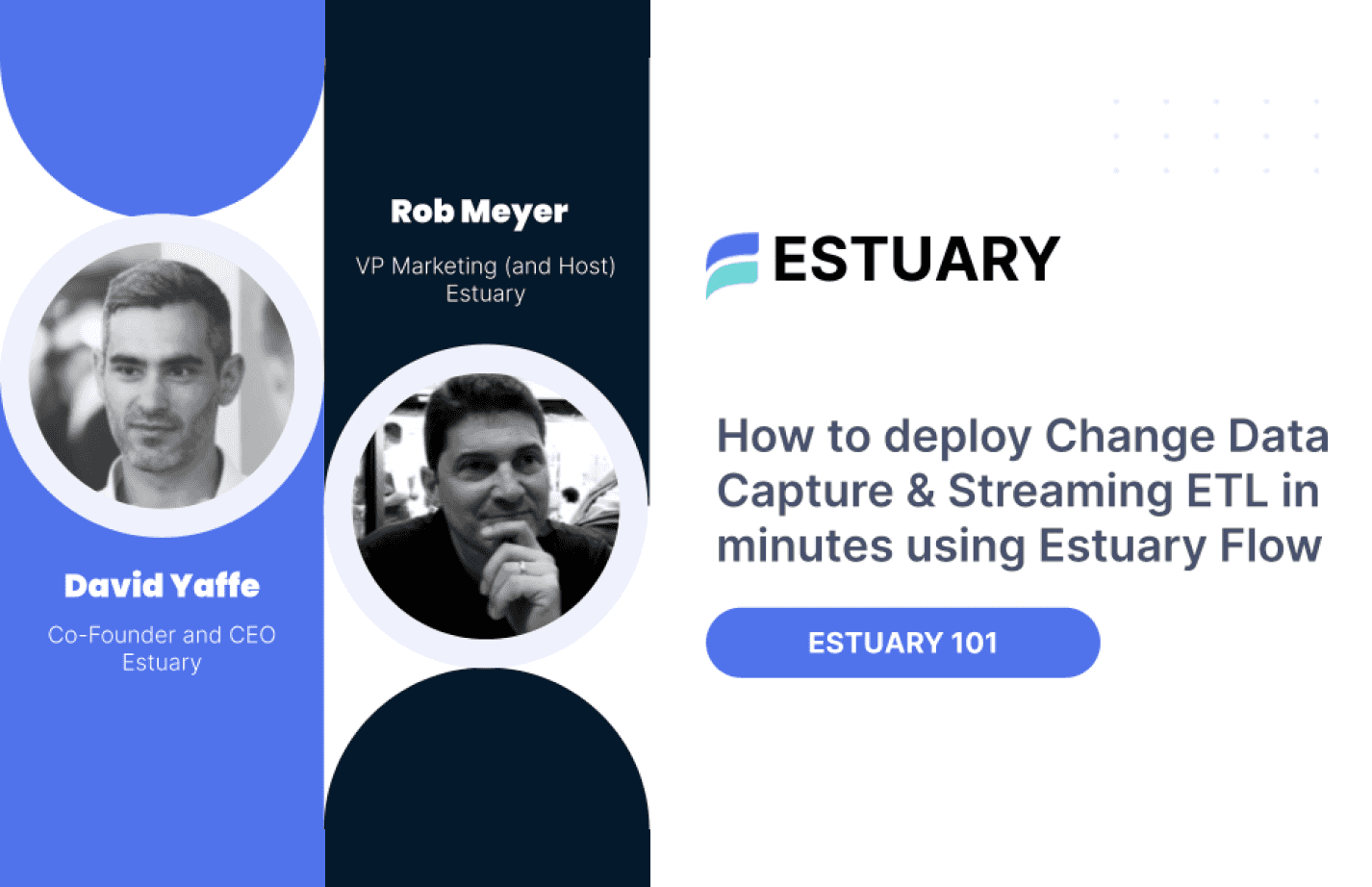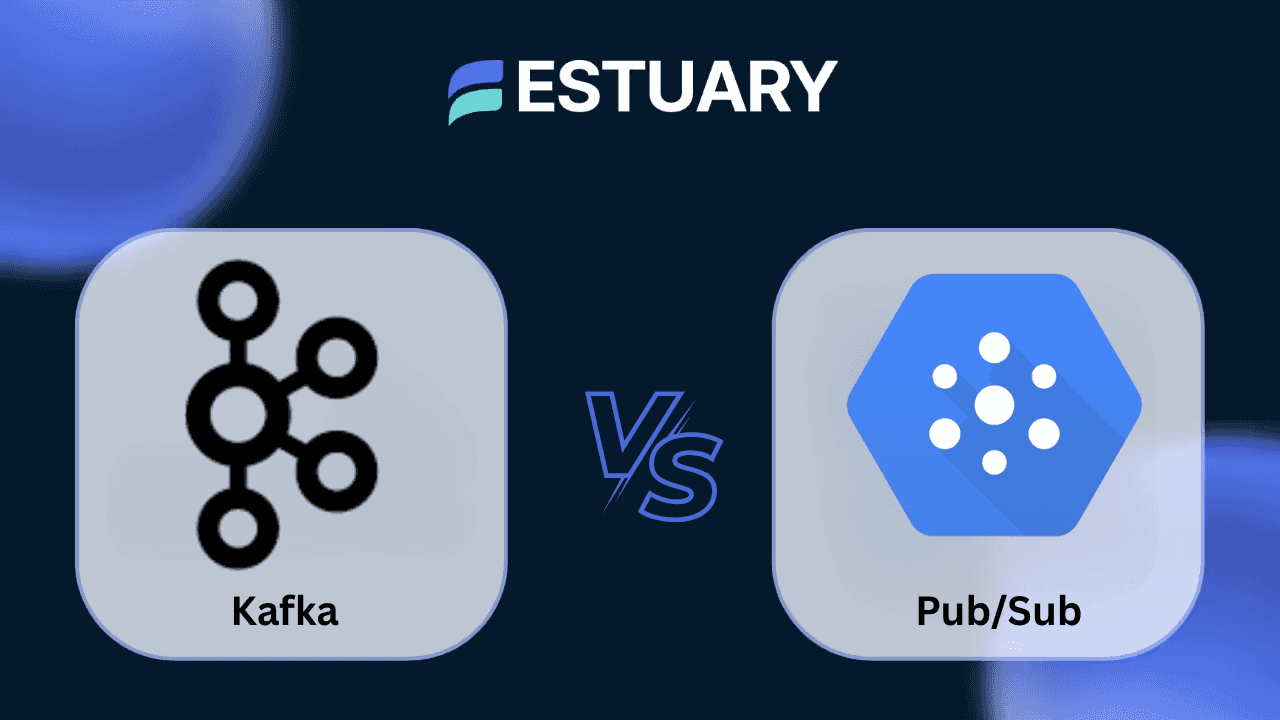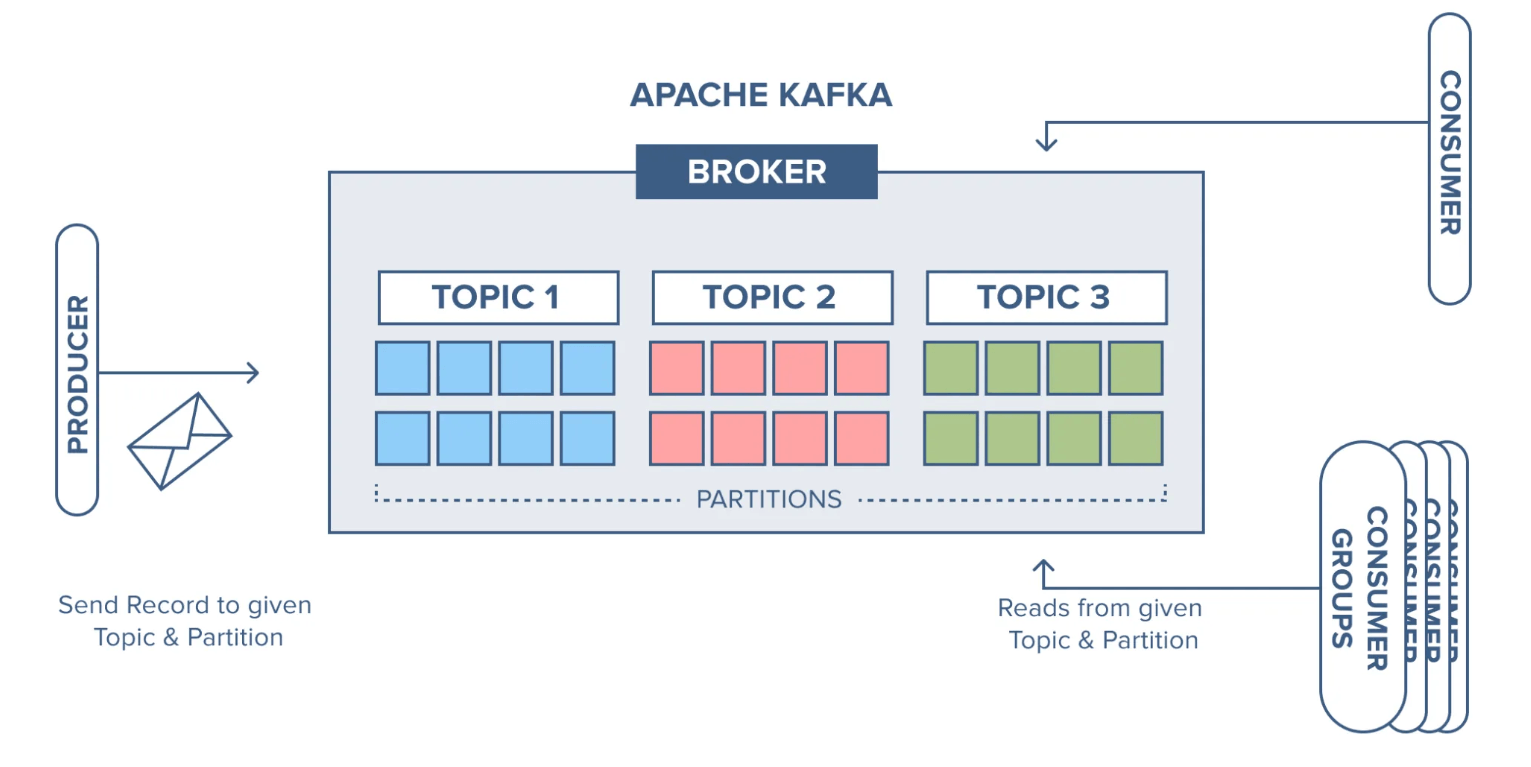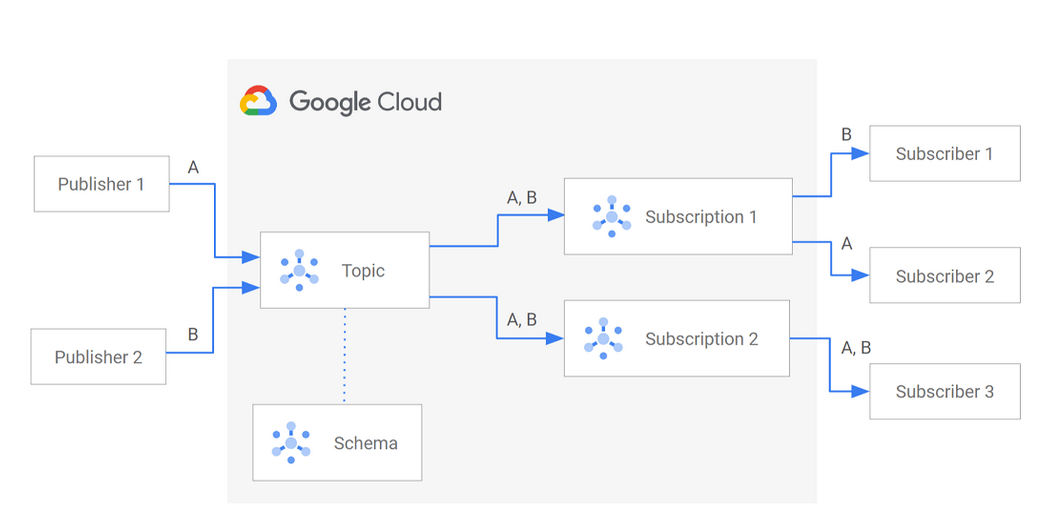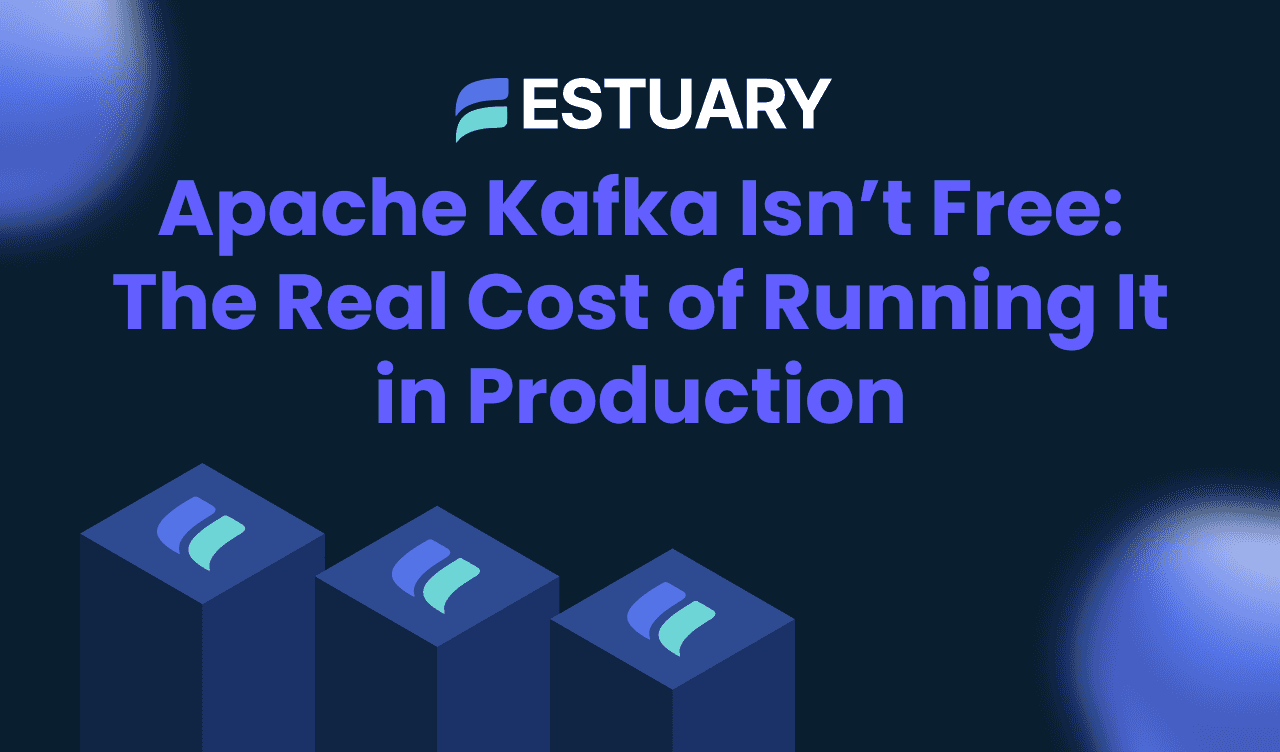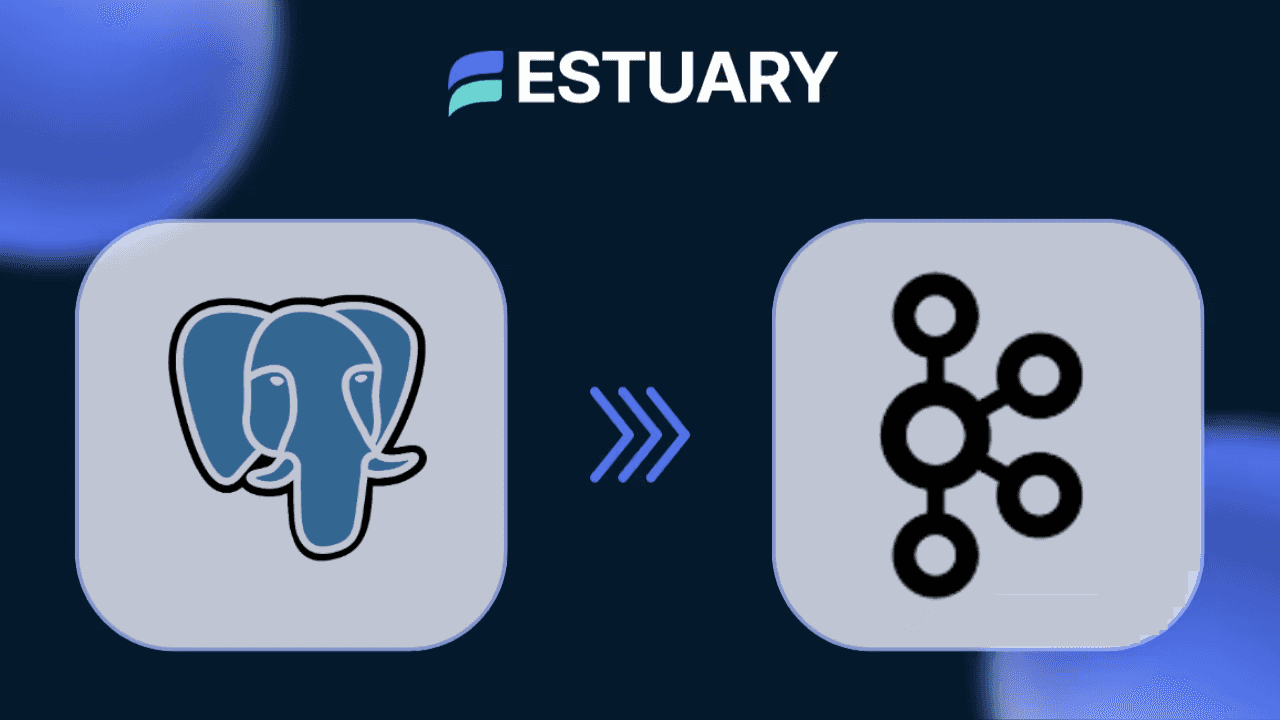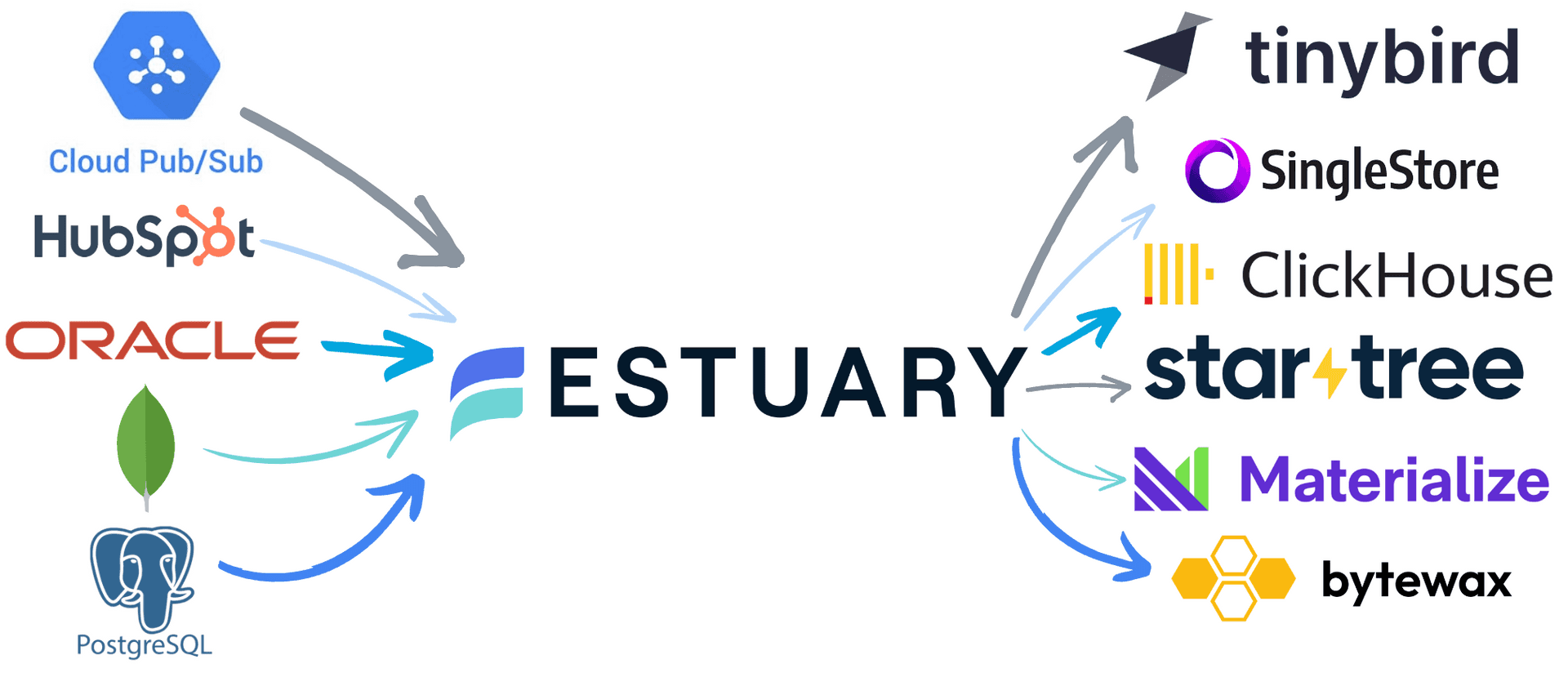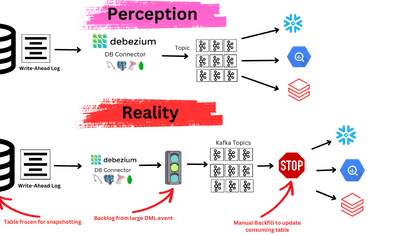
Choosing the right streaming platform is critical for any modern data architecture. Two popular options are Apache Kafka and Google Cloud Pub/Sub — both designed to handle real-time data ingestion and event distribution, but built on very different foundations.
Kafka is a distributed, open-source event streaming system known for its high throughput, flexibility, and strong ecosystem support. In contrast, Google Cloud Pub/Sub is a fully managed messaging service built for global scale, seamless integration with the Google Cloud ecosystem, and simplicity over control.
This comparison breaks down the key differences between Kafka and Pub/Sub in terms of architecture, message delivery guarantees, scalability, replay capabilities, pricing models, and real-world use cases. Whether you're building event-driven microservices, streaming ETL pipelines, or IoT ingestion flows, this guide will help you decide which tool aligns better with your technical requirements and operational goals.
What is Apache Kafka?
Apache Kafka is a distributed, open-source event streaming platform designed to handle high-throughput, real-time data pipelines. Originally developed at LinkedIn and later open-sourced through the Apache Software Foundation, Kafka is widely used to publish, store, and process streams of records across microservices, analytics systems, and data lakes.
Kafka works by organizing data into topics, which are divided into partitions for horizontal scalability. Producers write data to topics, while consumers read from them independently, allowing multiple downstream systems to process the same data stream in real time.
Kafka guarantees durability, message ordering within partitions, and at-least-once delivery by default (with support for exactly-once semantics in specific configurations). As of Kafka 4.0, it runs in KRaft mode by default, eliminating the need for ZooKeeper and simplifying deployment.
Common use cases include log aggregation, real-time analytics, event sourcing, and Change Data Capture (CDC) with tools like Debezium.
What is Google Cloud Pub/Sub?
Google Cloud Pub/Sub is a fully managed, real-time messaging service provided by Google Cloud Platform (GCP). It enables decoupled communication between services by allowing publishers to send messages to a topic, and subscribers to receive them asynchronously, in real time.
Pub/Sub supports both push and pull delivery models:
- In pull, subscribers poll the service for new messages.
- In push, Pub/Sub sends messages to an endpoint (like an HTTP webhook or Cloud Function) as they arrive.
One of Pub/Sub’s strengths is automatic horizontal scaling. It handles millions of messages per second with minimal configuration, making it ideal for workloads that fluctuate in volume. It also integrates natively with other GCP services like BigQuery, Dataflow, Cloud Functions, Cloud Run, and Cloud Storage.
Pub/Sub offers at-least-once delivery and supports message de-duplication using message IDs. While it doesn’t guarantee strict ordering by default, ordering keys can be used for in-order delivery within a topic.
Pub/Sub is commonly used in GCP-native architectures for event-driven microservices, IoT data ingestion, and serverless real-time pipelines.
Key Differences Between Kafka and Google Cloud Pub/Sub
While Apache Kafka and Google Cloud Pub/Sub both offer powerful real-time messaging capabilities, they differ significantly in how they're designed, managed, and integrated into your architecture. Below are the key differences across the dimensions that matter most when evaluating a streaming platform.
Architecture and Management
Kafka is a distributed event streaming platform based on a server-client architecture. A Kafka cluster typically spans multiple brokers (servers), each responsible for managing partitions of data across topics. You deploy and operate Kafka yourself — whether on-premises, in the cloud, or via managed services like Confluent Cloud or Amazon MSK. Producers write to topics, and consumers pull from them at their own pace, with the help of consumer groups.
In contrast, Google Cloud Pub/Sub is a fully managed messaging service with a two-plane architecture: the control plane handles configuration (assigning publishers and subscribers), while the data plane routes and delivers messages. Clients connect via routers, and messages are distributed across forwarders for delivery — all abstracted from the user.
Takeaway: Kafka offers deeper control and tunability. Pub/Sub abstracts all infrastructure, making it easier to deploy but less customizable.
Scalability and Performance
Kafka achieves scalability by distributing data across partitions and brokers. You control how many partitions a topic has and where they’re placed, which provides precise performance tuning — but requires planning and operational oversight.
Pub/Sub, on the other hand, scales automatically with no partitioning to manage. It can ingest and deliver millions of messages per second and automatically adjusts throughput based on demand.
Takeaway: Kafka gives power users more scalability control. Pub/Sub handles it for you, which is ideal for variable or unpredictable workloads.
Message Delivery Semantics
Kafka provides at-least-once delivery by default, and supports exactly-once semantics when configured carefully using idempotent producers and transactional writes. It also preserves message order within each partition.
Pub/Sub also uses at-least-once delivery, but adds support for message deduplication with custom message IDs. For ordering, you can use ordering keys, though ordering is not guaranteed across all messages by default.
Takeaway: Kafka has stronger guarantees for ordered and exactly-once delivery, while Pub/Sub emphasizes simplicity with best-effort ordering.
Data Retention and Replay
Kafka stores messages for a configurable retention period — from hours to forever — regardless of whether they’ve been consumed. Consumers can re-read messages from any offset, making it ideal for reprocessing or backfills.
Pub/Sub retains messages for up to 7 days by default, extendable to 31 days in Pub/Sub Lite. It also supports seek operations within that window, allowing limited replay capabilities.
Takeaway: Kafka excels at long-term storage and message replay. Pub/Sub is simpler, but more limited in historical access.
Ecosystem and Integrations
Kafka integrates with a rich open-source ecosystem including Kafka Connect, Flink, Spark, Debezium, ksqlDB, and more. It’s cloud-agnostic and well-suited for hybrid and multi-cloud deployments.
Pub/Sub is optimized for Google Cloud-native environments. It integrates deeply with BigQuery, Dataflow, Cloud Functions, Cloud Run, and Cloud Storage, making it ideal for serverless and real-time GCP workloads.
Takeaway: Choose Kafka for flexibility across platforms. Choose Pub/Sub for simplicity within the GCP ecosystem.
Cost and Pricing Model
Kafka's cost depends on how it’s deployed. With self-managed Kafka, you incur infrastructure and operational costs. Managed services add licensing or usage-based pricing, but give you more predictability.
Pub/Sub uses a pay-as-you-go model based on message volume (ingress and egress), delivery attempts, and optional features like message ordering or extended retention.
Takeaway: Pub/Sub has more transparent, usage-based pricing. Kafka offers more control, but potentially higher hidden ops cost.
Kafka vs Google Pub/Sub: Feature-by-Feature Comparison
Below is a side-by-side summary of the most important differences between Apache Kafka and Google Cloud Pub/Sub. This table highlights how they stack up across architecture, delivery guarantees, scaling behavior, replay capabilities, and more.
Feature | Apache Kafka | Google Cloud Pub/Sub |
| Deployment Model | Self-managed or via services like Confluent / MSK | Fully managed by Google Cloud |
| Architecture | Broker-partition-based, user-controlled | Control plane + data plane (routers and forwarders) |
| Scalability | Manual via partitioning and broker tuning | Automatic horizontal scaling |
| Delivery Semantics | At-least-once (default); exactly-once with config | At-least-once; optional deduplication with message IDs |
| Ordering Guarantees | Strict ordering within partitions | Per-key ordering (not global); ordering keys supported |
| Retention & Replay | Configurable retention; full replay via offsets | 7-day retention (up to 31 in Lite); limited seek-based replay |
| Ecosystem Integration | Open-source tools (Flink, Spark, Connect, ksqlDB, etc.) | Native GCP services (BigQuery, Dataflow, Cloud Functions) |
| Use Case Flexibility | Cloud-agnostic; works in hybrid/on-prem/cloud | Best for GCP-native or serverless environments |
| Pricing Model | Infra + ops costs (varies); managed options available | Pay-as-you-go: volume, delivery, retention |
Takeaway:
- Kafka is ideal when you need full control, advanced guarantees, or multi-cloud flexibility.
- Pub/Sub is better for teams already in GCP looking for real-time messaging with minimal setup.
When to Use Kafka vs Google Cloud Pub/Sub
Both Kafka and Pub/Sub are excellent for streaming data in real time, but they’re optimized for different environments, workloads, and team capabilities. Here's how to choose the right one based on your context:
Use Apache Kafka if...
- You need fine-grained control over data flow, scaling, and partitioning.
- Your architecture spans on-premises, multi-cloud, or hybrid environments.
- You require long-term retention, full replay support, or exactly-once delivery guarantees.
- You’re building complex pipelines with open-source tools like Kafka Connect, Flink, or ksqlDB.
- You want to integrate with event-driven platforms like Debezium for CDC.
Best for: Large-scale real-time systems, CDC pipelines, high-throughput data lakes, event sourcing, and environments where infrastructure control is essential.
Use Google Cloud Pub/Sub if...
- You're building within the Google Cloud ecosystem and want seamless integration with BigQuery, Dataflow, Cloud Functions, or Cloud Run.
- You prefer a fully managed, auto-scaling service with minimal ops.
- Your workload has variable throughput or is serverless by design.
- You want a fast way to connect microservices or ingest streaming data without managing partitions.
Best for: Cloud-native apps on GCP, IoT pipelines, serverless microservices, and teams prioritizing ease of use over deep infrastructure control.
Simplifying Real-Time Data Pipelines with Estuary Flow
While Kafka and Google Pub/Sub handle the transport layer of event streaming, most teams still face the challenge of getting data into and out of those systems efficiently. That’s where Estuary Flow offers a distinct advantage.
Estuary Flow is a real-time data integration platform that simplifies building end-to-end streaming pipelines. It includes native capture connectors (to extract data from sources like databases, APIs, or Kafka) and materialization connectors (to deliver data to analytics systems, lakes, or SaaS tools) — all within a single unified interface.
Flow is streaming-native by design and supports both backfill (batch) and continuous change data capture (CDC), so your pipelines start fresh and stay synced, without manual intervention or infrastructure management.
You can capture events from Kafka topics, PostgreSQL, or MongoDB, transform the data in real time, and materialize it directly to BigQuery, Snowflake, ClickHouse, or even S3/Parquet.
Key Features of Estuary Flow:
- Capture Connectors: Ingest real-time data from Kafka, databases (Postgres, MySQL, SQL Server), SaaS APIs, and cloud storage.
- Materialization Connectors: Push data continuously into Snowflake, Redshift, BigQuery, Databricks, Iceberg, Delta Lake, and more.
- No-Code and Declarative Interface: Build pipelines via web UI or YAML specs that integrate easily into CI/CD workflows.
- Exactly-Once Guarantees: Strong consistency across captures and materializations with schema enforcement and time travel support.
- Fully Managed or BYOC: Deploy on Estuary’s managed infrastructure or Bring Your Own Cloud for privacy and compliance.
With Flow, you don’t need to patch together Kafka Connect, stream processors, and ETL jobs. You get a complete, cloud-native streaming engine that simplifies data movement across your stack, whether or not Kafka or Pub/Sub is in the picture.
Conclusion
Choosing between Apache Kafka and Google Cloud Pub/Sub depends on your architecture, control requirements, and team expertise.
- Kafka offers unmatched flexibility, long-term retention, and advanced delivery guarantees — ideal for organizations that need full control over high-throughput event pipelines, especially in hybrid or multi-cloud environments.
- Pub/Sub, on the other hand, excels in simplicity and scalability. It’s the better choice for GCP-native, serverless, or auto-scaling workloads where infrastructure management isn’t a priority.
But if your real goal is to move data in real time from source to destination, neither Kafka nor Pub/Sub solves the whole problem. That’s where Estuary Flow comes in — providing a unified, streaming-native platform that captures data from systems like Kafka or Postgres, transforms it mid-flight, and materializes it into warehouses, lakes, and APIs.
Whether you’re syncing databases, ingesting Kafka streams, or building modern data applications, Estuary Flow gives you real-time pipelines without the complexity.
Ready to build a streaming pipeline without managing Kafka or Pub/Sub? Start with Estuary Flow →

About the author
Team Estuary is a group of engineers, product experts, and data strategists building the future of real-time and batch data integration. We write to share technical insights, industry trends, and practical guides.

